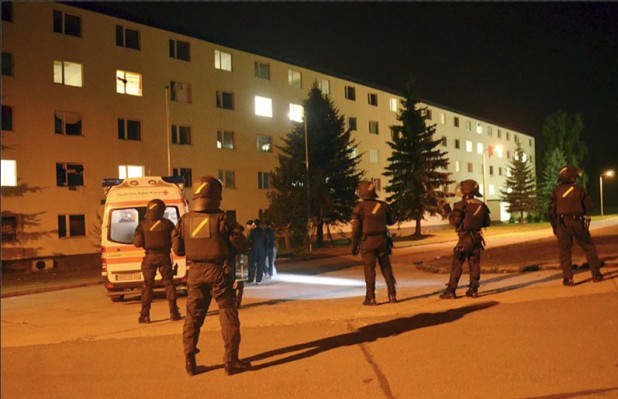The New Observer
October 30, 2015
German police in the city of Braunschweig, Saxony, have been forced to set up a special unit devoted exclusively to combatting nonwhite invader crime which has accompanied the massive influx of “refugees.”
According to a report in the Frankfurter Allgemeine Zeitung, the head of Braunschweig police’s Criminal Investigation Department, Ulf Küch, said that in the first ten weeks of the unit’s existence, it had dealt with 518 criminal cases in the Braunschweig Kralenriede area of the city alone.
The 518 cases took place among the 3400 “asylum seekers” in Kralenriede—which has a native German population of just 4000.
Police records in Braunschweig have, since the beginning of this year, seen an increasing number of shoplifting, pickpocketing, burglaries, and robberies. In Kralenriede, the number of shoplifting incidents had tripled, he said.
Of these incidents, 317 of were thefts. More than 55 invaders were arrested, and 17 arrest warrants have been issued. Two invaders who attacked a woman on her bicycle and robbed her have already been sentenced to prison for two years, Küch added.
However, Küch admitted, this does not represent the entire extent of the criminality problem because there are a large number of unreported incidents, particularly those taking place among the invaders themselves.
Officials at these centers report repeated incidents of mobile phone theft and violent assaults.
“Also, there are many violent clashes, which can be partly pacified only with a large contingent of police,” he said.
“There are certain nationalities who take a very organized approach,” he said, naming Georgians, “groups from Kosovo,” and “single men from Central Africa and North Africa.”
Very often these sorts have no passports or papers. “We have groups of people who come here under the guise of asylum seekers only to commit criminal offenses, as it is clear that they do not need to leave [their homes],” he concluded.
* An example of the sort of incident to which Küch was referring took place in an invader center in nearby Niederau bei Meissen, Dresden, last weekend, the German news source FOCUS reported.
There, a fight “between some 100 asylum seekers” over the setting of prayer times injured at least three, and a number of Afghanis were taken into custody.
According to the police, the Afghanis fought a pitched battle with “other nationalities” using metal bars ripped from bedding furniture, and the combatants could only be separated by a large police force.
* Meanwhile, the first comprehensive social and scientific study on violence in invader centers in Germany stated that “ethnic and religious conflict” is part of “everyday life” for the nonwhites, and is likely to increase.
According to the study, commissioned by the government of the state of Brandenburg, and published in Die Welt newspaper, “[V]iolent behavior and aggressive verbal confrontations, threats or insults and serious damage to property were very commonly reported, indicating they are part of everyday life.”
The researchers warned that altercations were increasing in number due to the rapidly growing occupancy density of the centers, and the fact that the invaders are becoming increasingly diverse in their regions and ethnic origin.
In the first six months of 2015 in invader camps in Saxony alone, there have been “many” rapes, 10 murders, 64 incidents of serious bodily harm, and 184 incidents of “lesser” bodily harm.
In addition, the official report said, the presence of “Islamists” among the invaders resulted in a “particularly brutal source of violence against women.”
 Daily Stormer The Most Censored Publication in History
Daily Stormer The Most Censored Publication in History



